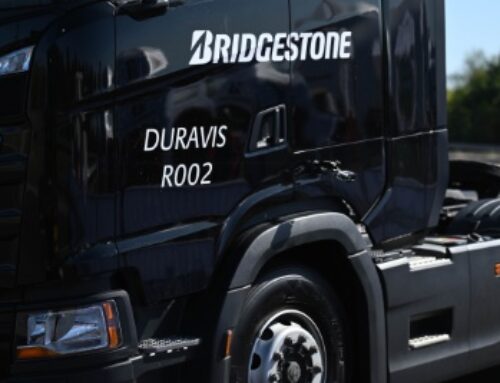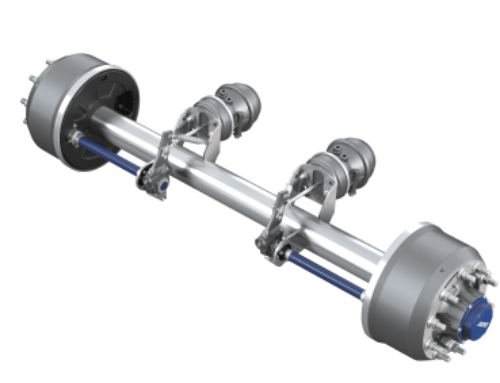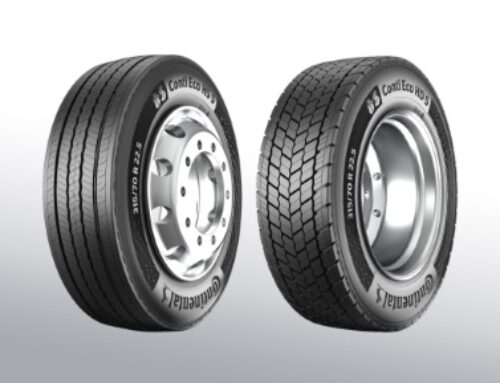Keeping operations on the road with on-vehicle power
 Andy Jones, managing director at Winton, discusses how on-board power solutions can help minimise downtime
Andy Jones, managing director at Winton, discusses how on-board power solutions can help minimise downtime
For many transport firms, there are enough challenges on the roads without having to deal with the added problem of vehicle breakdowns. With an uncertain economic climate, they simply can’t afford to have a vehicle out of action.
The pace of change we are witnessing across the commercial vehicle industry is unprecedented, and a wide range of issues must be tackled by managers to ensure operations remain cost-effective and operationally efficient.
From managing fuel costs to the challenge of keeping up with technological change and ever-evolving regulations, many operators are feeling the pressure.
In this context, the issue of maximising uptime is brought into sharp focus. New research shows that the strain on UK fleet managers is telling, with a third saying that maintenance and other associated costs are the top issue keeping them awake at night.
In order to keep vehicles on the road, and to minimise downtime, many transport operators rely on mobile maintenance, especially for tyre repair. This allows the engineer to take the correct equipment to wherever the stranded vehicle is located and rectify issues there and then.
Compared to the traditional approach of using separate equipment to supply power, on-vehicle systems offer many benefits. However, the efficiency of these mobile units can vary depending on the equipment used.
Assessing the options
Some mobile maintenance teams choose to carry a separate compressor in the back of their van. However, this takes up valuable space and can be hazardous if it’s not properly secured.
An additional consideration is the need to ensure a fuel or power source is available wherever the customer’s vehicle is located, which can be difficult if it’s on the side of a road.
 In contrast, on-vehicle power systems can include a compressor, generator, inverter and/or hydraulic power, alongside a range of ancillary equipment, including racking and workbenches, external light bars and work lights.
In contrast, on-vehicle power systems can include a compressor, generator, inverter and/or hydraulic power, alongside a range of ancillary equipment, including racking and workbenches, external light bars and work lights.
They can be fitted to a wide range of commercial vehicles, from light commercial vehicles to 26 tonne lorries.
Manufacturers of on-vehicle power solutions will either use vane, screw or piston-driven compressor technology within their products – and while this might not seem overly significant, it can actually make a big difference to the bottom line.
Different types of compressors can vary significantly in their performance – and therefore their efficiency – and so it’s worth fleet managers taking a closer look at the solutions on offer.
Energy efficiency
For a compressor to operate efficiently, the internal air leakage paths must be kept to an absolute minimum – because air lost during compression equals lost energy. If internal leakages are low, the volumetric efficiency is increased, and the power required for a measured unit of delivered air is reduced.
A rotary vane compressor is made up of a rotor with longitudinal slots, which house individual sliding vanes. The rotor is offset within a stator (a cylinder), in which it rotates on maintenance-free white metal bushes. While the rotor turns on its axis, the vanes are pushed against the stator wall by centrifugal force, and the air is compressed.
Because their design results in minimal internal air leakage, vane compressors are volumetrically more efficient than screw compressors. The vanes move freely in their slots, but are always in contact with the internal surface of the stator (albeit not directly, due to lubrication), so the air seal is near-perfect.
Solutions that use rotary vane compressors in the design can reduce the load required by up to 20 per cent compared with other types of compressors, which delivers a fuel saving of up to 10 per cent. Small and compact, these compressors are ideal for mobile tyre fitting operators, delivering pressures of up to 13bar.
Ensuring compliance
Finally, it is important to be aware of some key regulatory requirements. On-vehicle power systems should be installed and certified in line with manufacturer guidelines and, where applicable, with approval to UK National Small Series Type Approval (NSSTA) or the N1 enhancement scheme requirements.
 Type Approval means that the vehicle installation conforms to current legislation, meets legal requirements and will add value to the vehicle resale in years to come.
Type Approval means that the vehicle installation conforms to current legislation, meets legal requirements and will add value to the vehicle resale in years to come.
It’s also important to consider the impact a conversion will have on payload, especially now that extra technology – and additional weight – is being fitted to light commercial vehicles to meet Euro 6 emission regulations.
In recent years we’ve reduced the weight of our core system considerably, and always check system weights when they are fully installed, ensuring that the true weight of all fittings, oils and any ancillary equipment the customer requires is properly captured.
When it comes to reliable mobile power solutions, on-vehicle power systems deliver a multitude of advantages – from reduced downtime, lower fuel usage, and greater energy efficiency.











